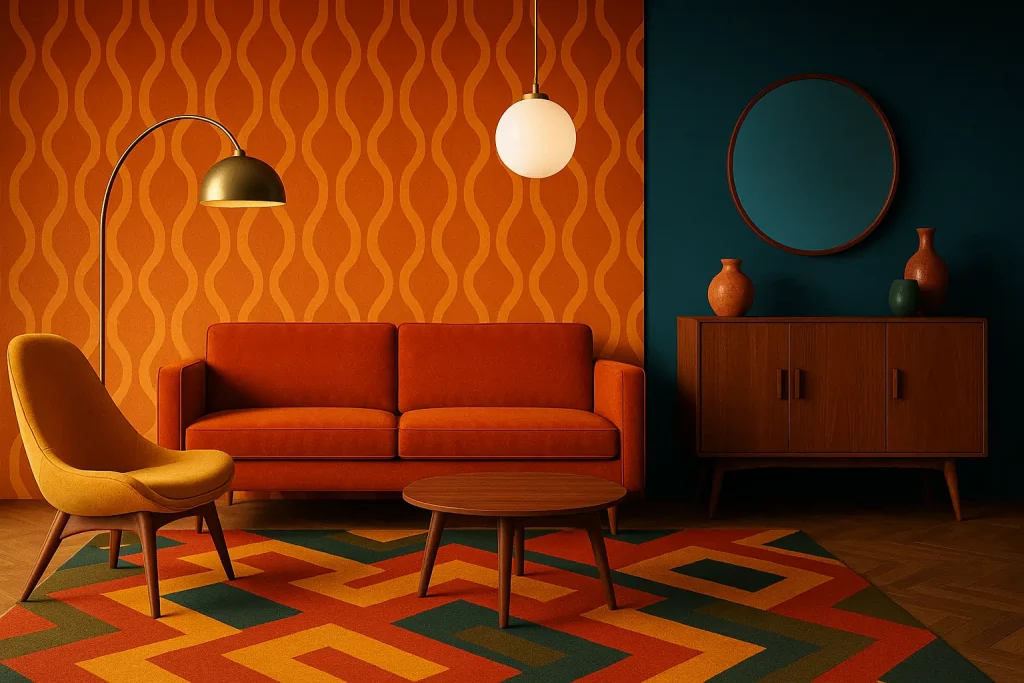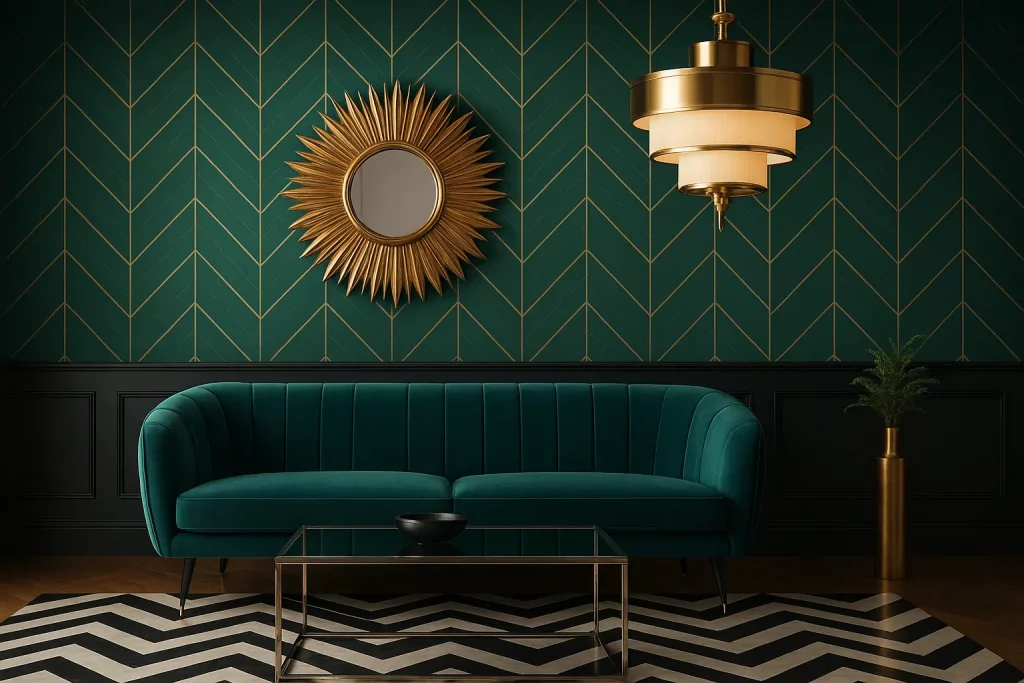Japanese interior design is a timeless aesthetic centered on creating serene, harmonious, and functional living spaces. It masterfully blends minimalism with a profound respect for nature, emphasizing clean lines, uncluttered surfaces, and organic materials to foster tranquility and mindfulness. This approach transforms your home into a peaceful sanctuary that nurtures the soul.
By embracing the core principles of this style, you can cultivate an environment that feels both sophisticated and deeply calming. The focus is on intentionality, where every object has a purpose and contributes to the overall sense of balance. This design philosophy celebrates simplicity, allowing you to create a home that is visually restful and spiritually rejuvenating.
Whether you are looking to completely remodel your space or simply introduce a few key elements, understanding the fundamentals of Japanese interior design is your first step.
Key Concepts of Japanese Interior Design
Japanese interior design philosophy is built on several key cultural concepts that guide its aesthetic and functional principles.
- Embrace Wabi-Sabi: This worldview centers on finding beauty in imperfection and transience. In design, it translates to appreciating natural materials with unique flaws, like knotted wood or handmade ceramics, celebrating their authentic character over manufactured perfection.
- Master the Concept of ‘Ma’: ‘Ma’ is the profound concept of negative or empty space. It’s not about emptiness but about the purposeful use of space to highlight focal points, create balance, and allow room for contemplation and energy to flow freely.
- Appreciate Shibui: Shibui represents a simple, subtle, and unobtrusive beauty. It’s an aesthetic of understated elegance that is quiet and calming. This is achieved through clean lines, muted color palettes, and a focus on texture and quality over ornate decoration.
Incorporate Low-Profile Furnishings
A defining feature of Japanese minimal interior design is the use of low-profile furniture. This practice is deeply rooted in the traditional Japanese concept of sitting on the floor, which fosters a closer connection to the earth. Low-to-the-ground pieces, such as low-slung sofas, coffee tables, and bed frames, create a sense of openness and make spaces feel larger and less cluttered.
The emphasis on low furniture also promotes a centered and calm mindset. By bringing the room’s visual weight downwards, you create a grounded and stable environment that encourages relaxation and mindfulness. This minimalist choice is not just about aesthetics but about cultivating a specific feeling within the space. When selecting pieces, opt for those with clean, simple lines and natural materials to align with the overall design philosophy.
From sleek entertainment systems to simple platform beds, incorporating these elements is fundamental to achieving an authentic look. Pairing a large, low coffee table with floor cushions instead of traditional chairs is an excellent way to embrace this style.
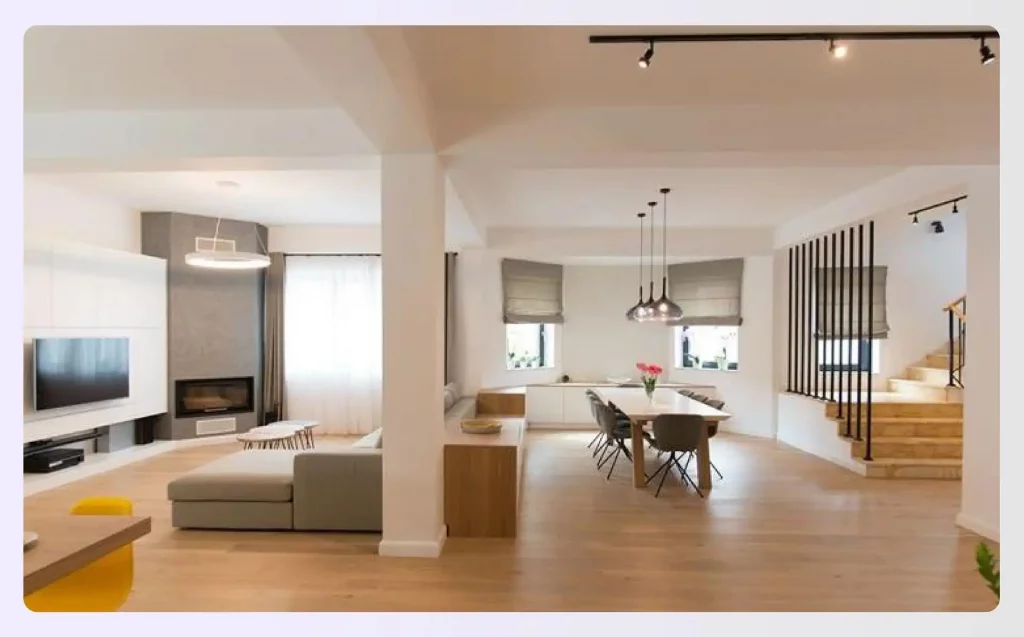
Using Tatami Mats for Authenticity
Tatami mats are a traditional and iconic element of Japanese interior design, crafted from rice straw to provide a comfortable and natural flooring surface. Their unique texture and earthy scent contribute to a serene and calming atmosphere in any room.
- Incorporating traditional tatami mats is an excellent way to add an authentic and culturally significant Japanese touch.
- The standard dimensions of tatami mats, approximately 90 cm x 180 cm, can be used to thoughtfully define a room’s layout.
- These rice straw mats are designed to promote a sense of groundness, which is a crucial element in Japanese design.
Incorporating these mats is an excellent way to enrich your environment with cultural significance and natural comfort, blending tradition with modern decor.
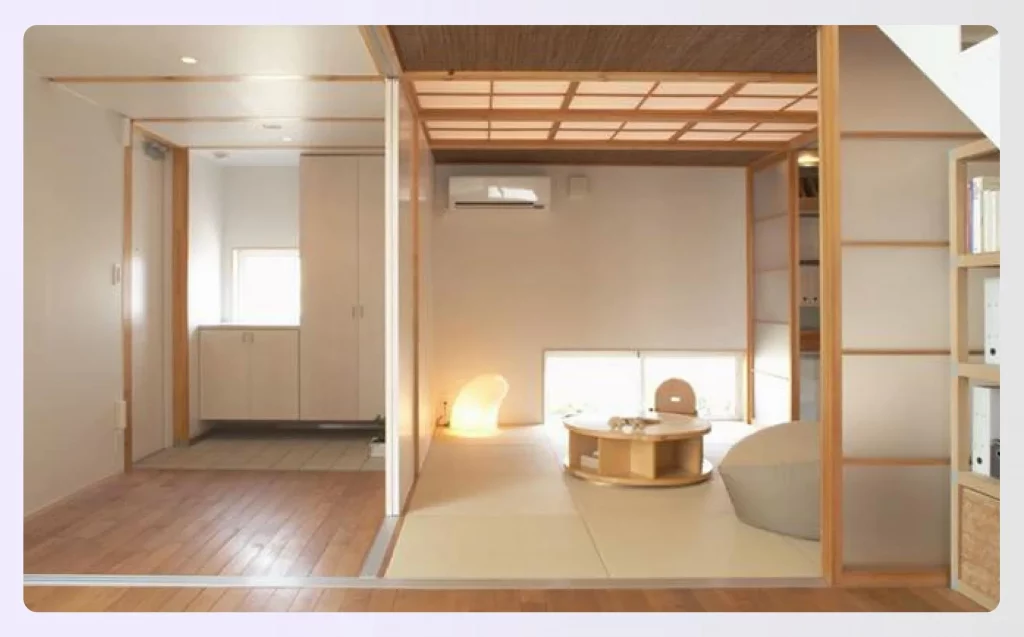
Choosing Futons for Functionality
In Japanese homes where space efficiency is crucial, the futon is a brilliant solution that embodies simplicity and functionality. This versatile bedding can be rolled up and stored away during the day, instantly transforming a bedroom into a multipurpose living area.
- Futons masterfully serve a dual purpose as comfortable bedding at night and easily stored items during the day.
- Their smart design perfectly aligns with the high value placed on multi-functional furniture in Japanese homes.
- By freeing up floor space, the use of futons actively supports a minimalist and uncluttered modern lifestyle.
This practical approach to furniture allows for a more flexible and adaptable living environment, which is a cornerstone of Japanese home design.
Read also – 15 Best Ways To Create an Open Floor Plan Layout in 2025
Wood and Bamboo in Furniture Design
Use of natural materials like wood and bamboo are fundamental to creating the warm and organic feel of traditional Japanese homes. These elements are celebrated not only for their inherent beauty but also for their sustainability, connecting the indoor space with the natural world.
- As a fast-growing and renewable resource, bamboo is a highly eco-friendly choice for Japanese furniture and flooring.
- Beautiful woods can be incorporated as structural beams, decorative wall panels, and expertly crafted furniture pieces.
- Both bamboo and wood are central to the design, infusing interiors with a warm and organic touch.
Incorporating furniture made from these materials helps create a balanced, inviting, and timeless environment that reflects superb Japanese craftsmanship.
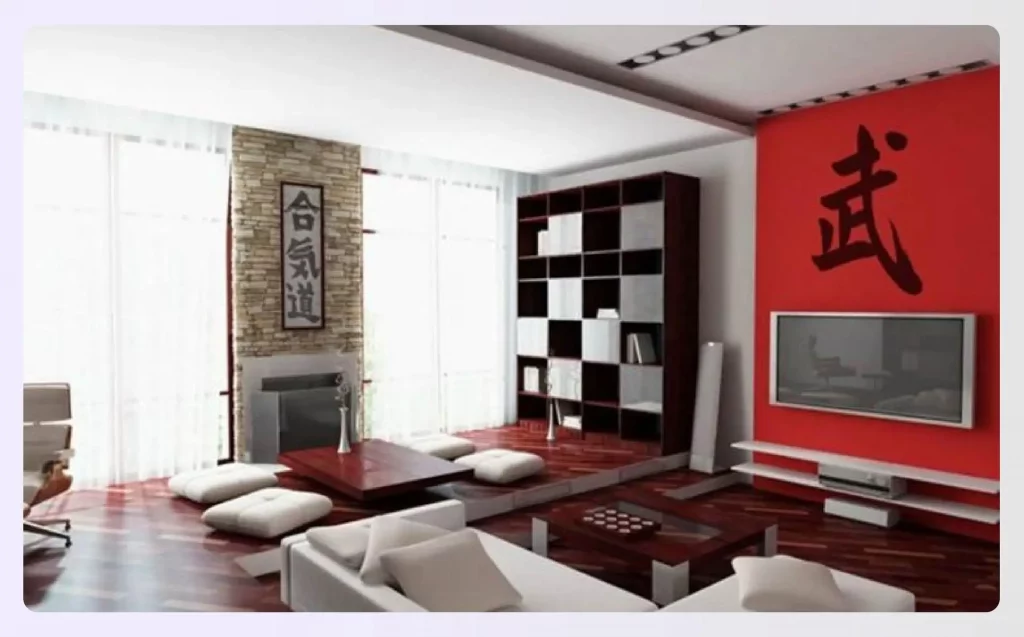
Read also – Top Interior Designing Software Tools to Learn in 2024
Stone and Ceramic Elements
The use of stone and ceramic is integral to creating a tranquil, nature-inspired atmosphere, particularly in spaces like the bathroom. These materials evoke a sense of calm and durability, grounding the room with their earthy textures and solid presence. A Japanese style bathroom often combines stone flooring or wall accents with wooden elements to create a harmonious, spa-like sanctuary that emphasizes simplicity and natural beauty.
Beyond the bathroom, ceramic elements serve as key decorative accents throughout the home. Items like handcrafted vases, intricate tea sets, and elegant tableware reflect the deep cultural appreciation for craftsmanship in Japan. These pieces add aesthetic appeal and cultural richness without creating clutter.
Modern interpretations also see these materials used in innovative ways. For instance, contemporary Ofuro (soaking tubs) might be crafted from marble or feature ceramic detailing, offering a modern twist on a traditional relaxation ritual.
Adopt a Neutral Color Palette
A hallmark of Japanese interior design is its reliance on a neutral and nature-inspired color palette. This approach is fundamental to creating the tranquil and serene atmosphere the style is known for. The palette is dominated by soft, subdued shades drawn from the natural world, such as beige, stone gray, taupe, and creamy off-whites. These colors serve as a calming backdrop, allowing the mind to relax and find focus without distraction.
The philosophy behind this muted color scheme is to promote harmony and simplicity. By avoiding loud, overstimulating colors, the design allows textures and subtle details to take center stage. The interplay of light on a textured wall or the natural grain of wood becomes more pronounced against a neutral canvas.
To add depth and prevent the space from feeling flat, darker hues are used as accents. Touches of black or deep indigo can provide a striking contrast that highlights architectural features or specific decor pieces.

Understanding Color Psychology in Spaces
The psychology behind the Japanese color palette is focused on creating tranquility. A palette dominated by neutrals like whites, grays, and beiges establishes a sense of calm, while natural tones such as soft greens foster a serene atmosphere.
- Neutral color palettes centered on whites, grays, and beiges are used to create a distinct sense of calm.
- The strategic use of white and its various shades helps create the illusion of large, open spaces.
- Soft, natural tones inspired by nature, such as beige and soft greens, help to foster a serene atmosphere.
- Accent colors like black or other darker hues can be used to add visual depth and interesting contrast.
Proper lighting is also crucial, with mid to low levels used to avoid distractions and enhance the overall calming aesthetic.
Utilizing Earth Tones for Calmness
Earthy tones are fundamental to creating the soothing and harmonious environment central to Japanese interior design.
- Utilizing earthy tones like warm browns and soft greens creates a deeply soothing and calming atmosphere.
- A color palette that includes these natural earth tones helps to evoke a powerful sense of tranquility and harmony.
- These specific natural hues are beautifully reminiscent of traditional Japanese aesthetics, enhancing the overall design theme.
This natural color palette provides a serene backdrop that enhances the overall design while promoting a peaceful and balanced living space.
Read also – All You Need to Know About Building a Smart Home
Selecting Indoor Plants for Japanese Aesthetics
Bringing greenery indoors is a cornerstone of Japanese interior design, as plants symbolize life, growth, and the vital connection to nature. Iconic choices like bonsai trees are meticulously cared for, representing a form of living art, while elegant orchids or the simple lines of bamboo add a touch of grace and structure to any room.
When creating a japanese minimalist home design, it’s best to choose plants that align with the aesthetic of simplicity and require minimal maintenance. Varieties that thrive in lower light, such as ferns, moss, and bamboo, are excellent options. Other popular choices include aloe vera, palms, and dumbcanes, which add texture and natural elegance.
The integration of these plants should be thoughtful and intentional. Instead of filling a room with dense foliage, the Japanese approach favors placing a few carefully selected plants as focal points. This reflects the principle of ‘Ma’ (negative space), allowing each plant’s unique beauty to be fully appreciated.
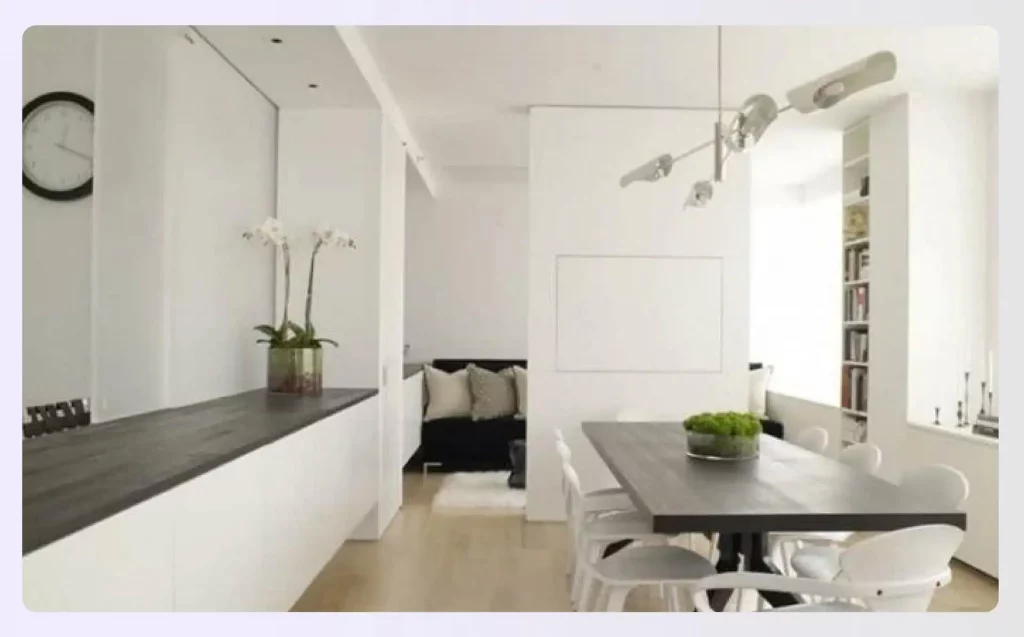
Read also – Top 6 IKIGAI Concepts in Interior Design
Incorporate Cultural Elements
Infusing your home with authentic cultural elements is key to achieving a genuine Japanese interior design. One of the most iconic elements is the shoji screen, a sliding panel made from translucent rice paper and a wooden frame. Shoji screens are brilliant as versatile room dividers, allowing natural light to filter through while providing privacy and maintaining a sense of flow between spaces.
Incorporating pieces like calligraphy scrolls, ink wash paintings, or delicate prints of cherry blossoms can add a layer of cultural richness and elegance to your walls. Beyond wall art, thoughtfully placed decor items such as handcrafted ceramic vases, traditional tea sets, or bamboo lanterns enhance the ambiance and reflect the timeless beauty of Japanese craftsmanship.
Finally, the selection of furniture with clean lines and simple forms is crucial. The focus should be on functionality and high-quality natural materials like wood and bamboo, often left in their raw state to showcase their inherent beauty.

The Role of Shoji Screens
Shoji screens are traditional sliding panels that serve as elegant and functional room dividers in Japanese homes. Made of translucent paper set in a wooden frame, they diffuse natural light beautifully while creating privacy and fostering interconnectedness between spaces.
- As sliding panels, shoji screens are highly valued for their incredible space-saving qualities in smaller homes.
- These versatile screens allow homeowners to easily create flexible spaces for privacy or temporary dining areas.
- Modern designs can be enhanced by incorporating glass panels for a more contemporary and updated look.
These versatile panels are an iconic element that blends traditional aesthetics with practical functionality, perfect for any Japanese interior design.
Displaying Traditional Artwork and Decor
Adding traditional Japanese art and decor is an effective way to infuse your space with cultural richness and elegance. These pieces serve as focal points that tell a story, connecting your home to the timeless traditions and craftsmanship of Japan.
- Incorporating traditional art forms like calligraphy and prints is a wonderful way to add cultural richness.
- Decorative items like ceramic vases, authentic tea sets, and lanterns greatly enhance the room’s aesthetic appeal.
- Art pieces like cherry blossom paintings feature delicate brushwork and are infused with rich cultural symbolism.
By thoughtfully displaying these items, you can create a harmonious environment that celebrates Japanese culture and adds authentic beauty to your home.
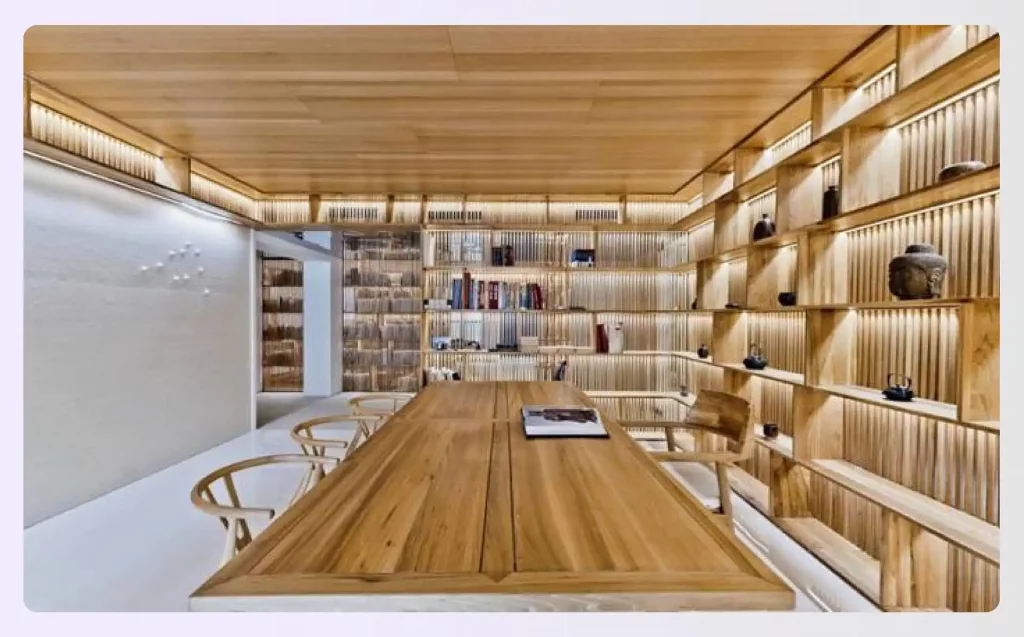
Use of Light in Japanese Interiors
Light, both natural and artificial, plays a pivotal role in shaping the atmosphere of a Japanese home. The design philosophy of shizen—harmony between people and nature—is embodied by maximizing natural light through large windows, skylights, and sliding doors.
- Large windows and sliding doors are utilized to create exceptionally bright and airy interior living spaces.
- Traditional shoji screens are designed to gently filter natural light into a room while providing privacy.
- Maximizing natural light is essential for embodying the philosophy of harmony between people and nature.
This emphasis on natural illumination not only brightens the home but also creates a seamless connection between the indoor and outdoor environments.
Maximizing Natural Light Sources
Maximizing natural light is a core principle in Japanese minimalist interior design, aimed at creating bright, open spaces. The goal is to blur the line between indoors and outdoors, fostering a serene atmosphere connected to the natural world.
- You should try to incorporate large windows and expansive glass doors to enhance natural light effectively.
- Consider utilizing skylights as a key architectural feature that allows an abundance of sunlight to enter.
- The use of traditional shoji screens helps to filter natural light while still maintaining your privacy.
By prioritizing natural light, you create an environment that feels expansive, tranquil, and perfectly aligned with Japanese aesthetic values.
Selecting Suitable Artificial Lighting
When natural light fades, artificial lighting in a Japanese home should maintain a soft, serene ambiance. The key is to use diffused, warm lighting that mimics the gentle glow of dusk rather than harsh, bright overheads that can feel clinical.
- Incorporate soft, diffused lighting like paper lanterns to create a sense of calmness.
- Recessed lighting can be employed to subtly highlight key architectural details or specific pieces of artwork.
- Adding dimmer switches is an excellent way to gain greater control over the intensity of the light.
A well-layered lighting scheme blends natural and artificial sources to create a balanced, inviting, and peaceful environment for any time of day.
Storage Solutions that Maintain Minimalism
Minimalism in Japanese interior design is sustained through clever and discreet storage solutions. The goal is to keep living spaces tidy and organized without sacrificing aesthetic appeal. This is achieved with built-in cabinetry, flexible shelving, and multifunctional furniture.
- Implementing a sleek shoe cabinet or rack helps to maintain an orderly and uncluttered entryway space.
- Incorporating multifunctional furniture is essential for creating flexible spaces that adapt to your daily changing needs.
- The design of flexible shelving and discreet built-in storage is key to keeping living spaces tidy.
These solutions ensure that every item has a place, allowing the home to remain a tranquil and uncluttered sanctuary.
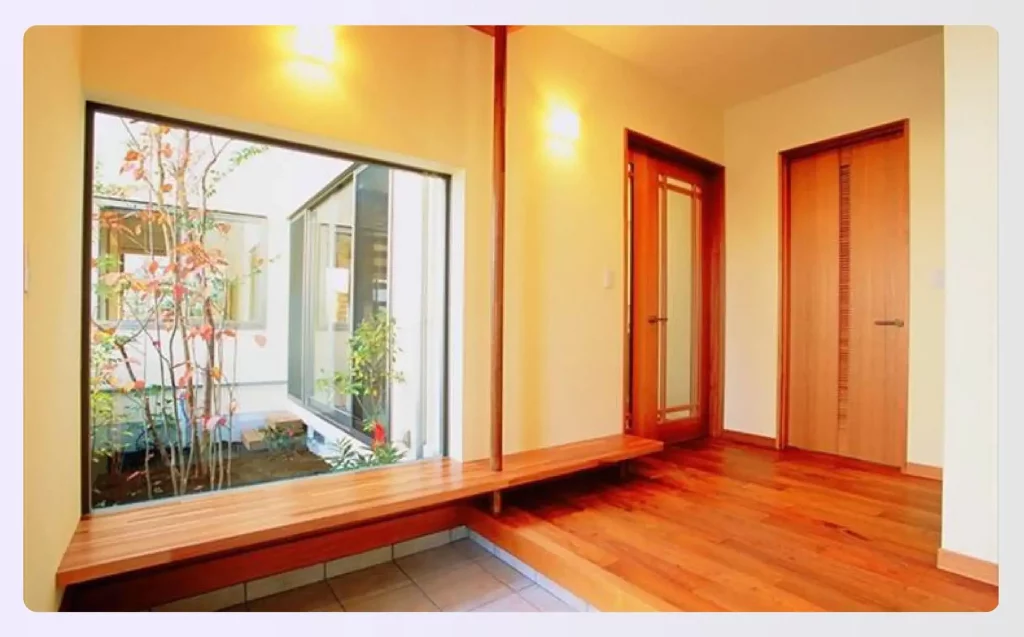
Bringing Serenity into Your Home
Creating a serene home is the ultimate goal of Japanese interior design. This tranquility is achieved by embracing Zen philosophy, which emphasizes simplicity, harmony, and a deep connection with nature. By decluttering your space and removing unnecessary items, you create a visually calm environment that allows for mental clarity and mindfulness.
A neutral color palette is foundational to this sense of peace. Shades of white, beige, gray, and brown provide a calm, unobtrusive backdrop that promotes relaxation. This is complemented by the integration of natural elements like indoor plants and bonsai trees, which enhance serenity and foster a connection to the outdoors.
Perhaps the most profound concept for achieving serenity is ‘Ma,’ the purposeful use of negative space. By leaving areas intentionally empty, you create quiet zones for respite and self-reflection, providing a visual pause from the busyness of everyday life.
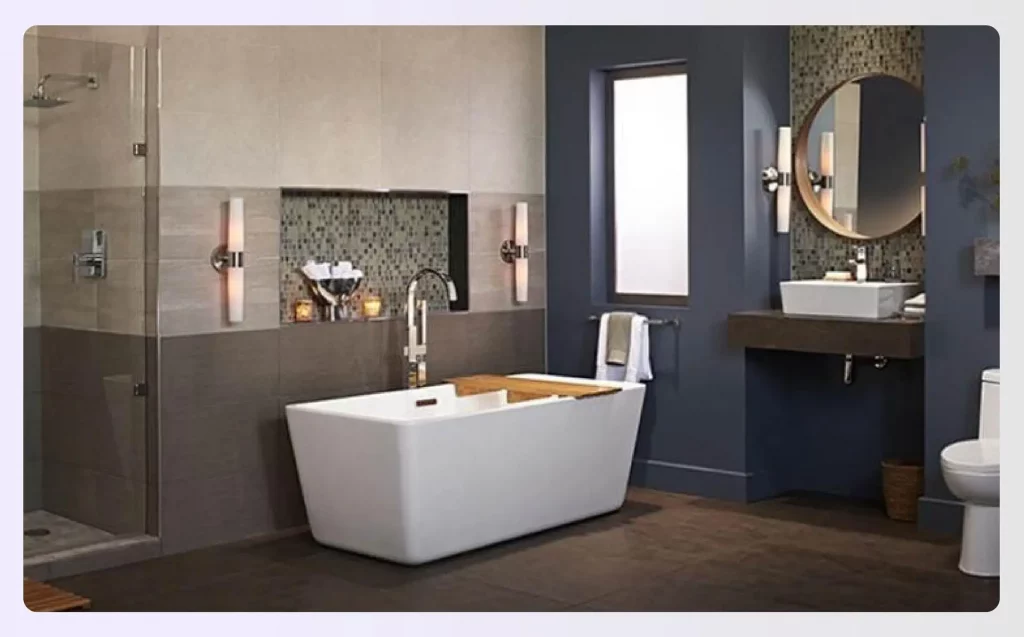
Conclusion: Achieving Balance and Harmony
Japanese interior design is a masterful exercise in achieving balance and harmony. It encourages a shift in perspective, moving away from the accumulation of things toward an appreciation for space, simplicity, and nature. By prioritizing clean lines and open, uncluttered spaces, you can cultivate a home that feels expansive and allows for a seamless flow of energy.
The emphasis on natural materials, such as wood, bamboo, and stone, fosters a tangible connection to the outdoors. Incorporating these rough-hewn textures and organic elements helps ground the space, creating a harmonious environment that is both calming and rejuvenating. This blend of simple forms and natural beauty is the essence of Japanese aesthetics, proving that a serene living space can be achieved through thoughtful, minimalist design.
Bringing these ideas into your own home is easier than ever with the right tools. With a platform like Foyr Neo, you can experiment with layouts, materials, and furniture to create your ideal Japanese-inspired sanctuary. Our advanced tools for photo-realistic renderings and real-time editing simplify the entire design process, allowing you to bring your vision to life effortlessly.
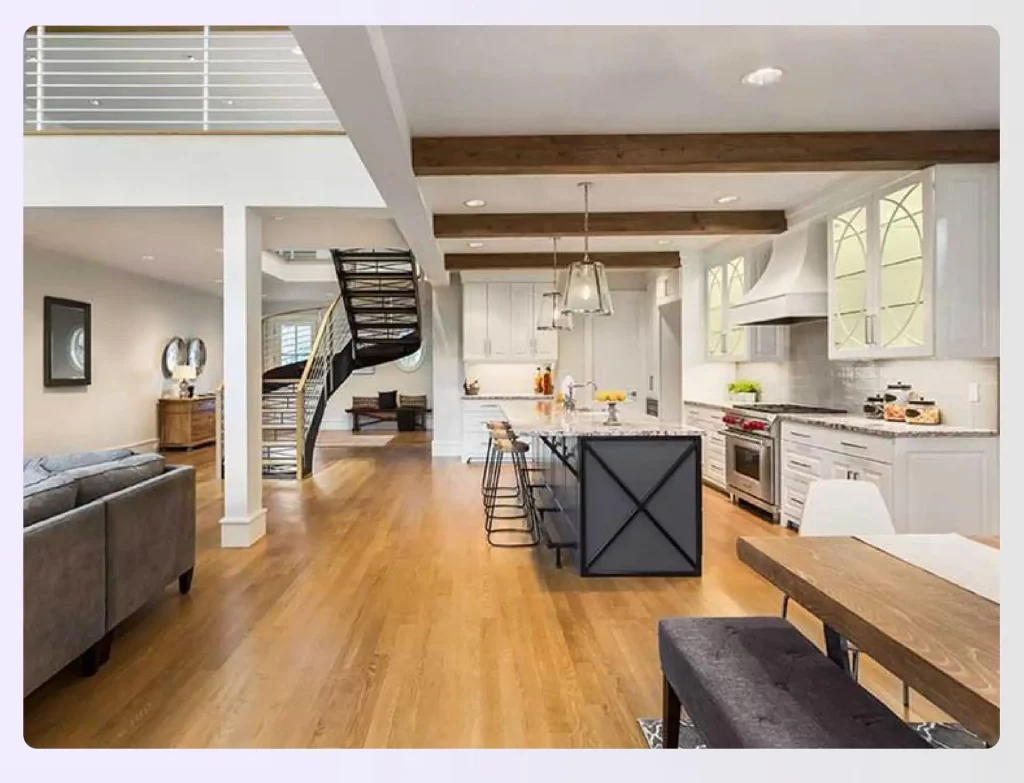
Build a Successful Business With the Right Interior Design Software
Having the right business tools is essential for making each stage of the interior design process simpler and more efficient. Foyr Neo is a powerful, all-in-one platform built with the needs of professional designers like you in mind.
- Choose from thousands of preloaded items like furniture, plants, accessories, and much more for your designs.
- You can also upload your own 3D models to create the exact custom look your clients want.
- The platform allows you to produce incredible 12K, photo-realistic renderings of your designs on demand.
- Take advantage of a full suite of advanced lighting options and other powerful visualization settings.
- Enjoy the flexibility of making edits and seeing the results instantly with real-time 3D editing capabilities.
Check out this video to see how to design a living room in minutes using Foyr:
By combining the functionality of multiple tools into one platform, Foyr empowers you to spend less time managing software and more time creating beautiful designs for your clients.
Sign up today for a 14-day free trial to elevate your creative projects to new heights!
Frequently Asked Questions (FAQs)
1. What role does minimalism play in Japanese interior design?
Minimalism is a core aspect, focusing on decluttered spaces with intentional, meaningful decor.
2. What role does natural light play in Japanese interior design?
Natural light is highly valued, and large windows or sliding doors are often used to bring the outdoors in.
3. What materials are commonly used in Japanese interiors?
Natural materials like wood, bamboo, paper, and stone are frequently used to connect with nature and create a warm ambiance.
4. How to create a Japanese minimalist interior design bedroom?
Using a low platform bed, shoji screens, and minimalist decor contribute to a calming and restful bedroom space.
5. What is the Japandi concept?
Incorporating natural materials, such as bamboo and stone, and creating a minimalist, clutter-free space contribute to a serene bathroom ambiance.
6. What is a Japandi style?
Japandi style is characterized by clean lines, bright spaces, and a muted color palette with occasional rich accent colors. It emphasizes high-quality, handcrafted furniture, natural materials like light woods and bamboo, and a clutter-free environment. The overall feel is a perfect blend of peaceful minimalism and cozy, comfortable living.
7. What are common Japandi decor mistakes?
A common mistake is creating a space that feels cold or sterile by being overly minimalist. Another is cluttering the space with too many decorative items, which defeats the purpose. It’s also important to balance the light, airy Scandi elements with the richer, earthier Japanese tones to avoid a one-dimensional look.
8. Who is a famous Japanese minimalist designer?
Tadao Ando is a world-renowned Japanese architect and designer famous for his minimalist aesthetic. His work is celebrated for its masterful use of natural light, simple geometric forms, and exposed concrete. He creates serene and contemplative spaces that beautifully exemplify the core principles of Japanese minimalism.
9. What is Muji interior design?
Muji interior design is based on the philosophy of the popular Japanese retail brand, which translates to “no-brand quality goods.” The style emphasizes simplicity, functionality, and sustainability. It features natural materials, a neutral color palette, and modular, space-saving furniture to create an organized, calm, and unpretentious living environment.
10. What is the difference between minimalist and Muji style?
While both styles champion simplicity, general minimalism can sometimes lean towards a stark, artistic, or even cold aesthetic. Muji style, on the other hand, is inherently warmer and more focused on practical, everyday living and comfort. It prioritizes natural textures, affordability, and creating a cozy, highly functional home over purely aesthetic minimalism. You can easily visualize both styles using Foyr Neo’s extensive library to see which one best fits your vision.



